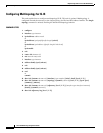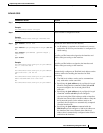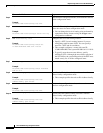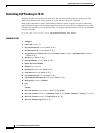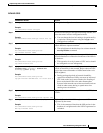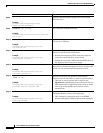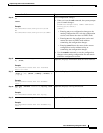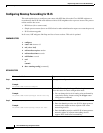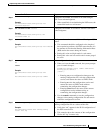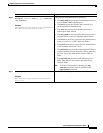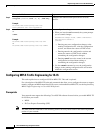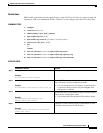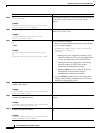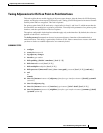
Implementing IS-IS on Cisco IOS XR Software
How to Implement IS-IS on Cisco IOS XR Software
RC-106
Cisco IOS XR Routing Configuration Guide
Configuring Nonstop Forwarding for IS-IS
This task explains how to configure your router with NSF that allows the Cisco IOS XR software to
resynchronize the IS-IS link-state database with its IS-IS neighbors after a process restart. The process
restart could be due to an:
• RP failover (for a warm restart)
• Simple process restart (due to an IS-IS reload or other administrative request to restart the process)
• IS-IS software upgrade
In all cases, NSF mitigates link flaps and loss of user sessions. This task is optional.
SUMMARY STEPS
1. configure
2. router isis instance-id
3. nsf {cisco | ietf}
4. nsf interface-expires number
5. nsf interface-timer seconds
6. nsf lifetime seconds
7. end
or
commit
8. show running-config [command]
DETAILED STEPS
Command or Action Purpose
Step 1
configure
Example:
RP/0/RP0/CPU0:router# configure
Enters global configuration mode.
Step 2
router isis
instance-id
Example:
RP/0/RP0/CPU0:router(config)# router isis isp
Enables IS-IS routing for the specified routing instance, and
places the router in router configuration mode.
• You can change the level of routing to be performed by
a particular routing instance using the is-type router
configuration command.
Step 3
nsf {cisco | ietf}
Example:
RP/0/RP0/CPU0:router(config-isis)# nsf ietf
Enables NSF on the next restart.
• Enter the cisco keyword to run IS-IS in heterogeneous
networks that might not have adjacent NSF-aware
networking devices.
• Enter the ietf keyword to enable IS-IS in homogeneous
networks where all adjacent networking devices
support IETF draft-based restartability.



